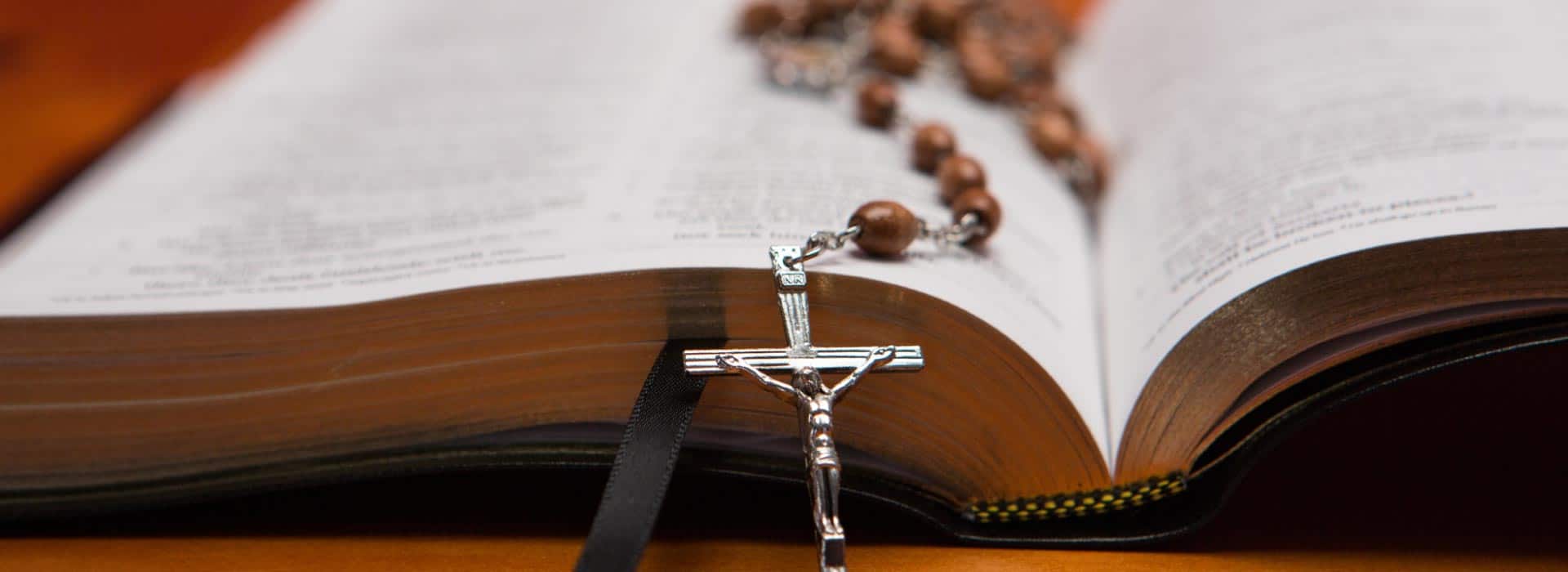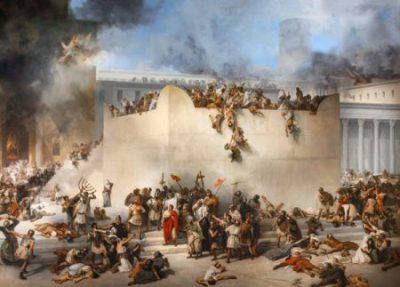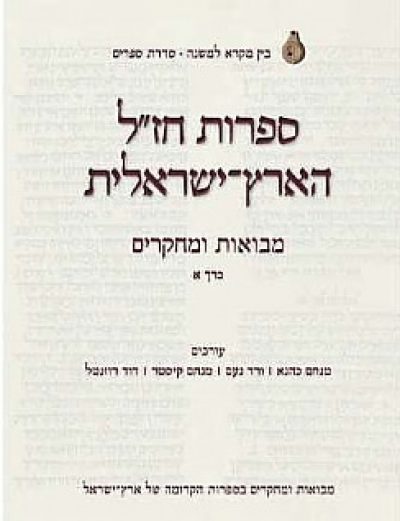Judaism is a religious culture which does not mandate the practice of celibacy. Actually, it is reputed that there was only one rabbi, out of the thousands mentioned in the Talmud, who remained a bachelor. The Jewish ideal is for a man and woman to marry and to raise a family together, as it is written in Genesis 2, starting with verse 18: “And the Lord God said, ‘It is not good for man to be alone…Therefore shall a man leave his father and mother, and shall cleave unto his wife, and they shall become as one flesh.'”
Two great medieval Biblical commentaries disagreed on the meaning of the last phrase “become as one flesh.” Rashi (France, 1040-1105) said it refers to the offspring that would be born of the couple’s union. Ramban (Spain, 1194-1270) argued that reproduction is not unique to human beings. Thus, he said, the phrase must refer to the special quality of intimacy that characterizes the human conjugal relationship, in contradistinction to the rest of the animal world. Marriage is not only a vehicle for procreation; it is a framework for companionship and love and the overcoming of what 20th century Jewish philosopher Rabbi Joseph B. Soloveitchik called “man’s existential loneliness.”
A Jewish marriage is obviously an important event in the lives of the two individuals who wed and their families. But, because so much of Jewish practice and education for Jewish identity takes place in the home, it is perceived also as an important event in the life of the Jewish community they are joining, as well as the Jewish people worldwide. A new home has been built in Israel, both literally and figuratively. In fact, one of the popular blessings wished to a newly-wed couple, no matter where they may live in the world, is “May you build a faithful home in Israel.” (As you may have noticed, the name “Israel” can refer, in different contexts, to the people, the land, the State. Here, it refers to the people as both a national and a spiritual entity.)

Although in ultra-Orthodox communities, marriages are still arranged by the families, in the rest of the Jewish world, young people meet on their own and date. When they have decided that they want to get married and the families have met, etc., it is time to begin planning the wedding. (Some families may hold some type of celebration to mark the engagement, but, except in ultra-Orthodox circles, this is falling into disuse.)
As you probably know, within the State of Israel, only religious marriages and divorced are recognized, unless they have been performed abroad. Thus, some secular couples go to Cyprus for their marriage. Others may combine the trip with a non-Orthodox wedding performed in Israel, by a liberal (Reform or Conservative) rabbi not officially recognized by the establishment rabbinate. The liberal weddings would be very similar to the more traditional ceremony we will now describe, the differences mainly being in the order of some of the elements and the enhanced participation of women in the ceremony.
Most Jewish weddings begin with a kind of buffet reception, continue with the actual ceremony and then the festive meal, usually including music and dancing. The meal may also be a buffet, or it may be a sit-down dinner with several courses. The dancing may be traditional Jewish wedding dancing, often done in separate men’s and women’s circles; it may be contemporary social dancing, ethnic dancing, or any combination of the above. It is customary to bring gifts to the young couple and to wish them and their families “Mazal tov.”
The origins of the Jewish wedding ceremony lie in the Mishnah, a second-century Rabbinic commentary on the Torah. The Mishnah states that a wife is “acquired” in three ways, by money, by a written document and by intercourse. The traditional Jewish wedding ceremony, as it has evolved over the centuries, includes, at least symbolically, each of these elements.
The financial aspect of the transaction is symbolized in the groom giving the bride a ring and saying, “With this ring, you are consecrated unto me, according to the Teaching of Moses and Israel.” The written document is the ketubah, or marriage contract. This is usually read aloud during the ceremony, in the original Aramaic, in a Hebrew translation, or sometimes in condensed form in either or both languages. The ketubah spells out the responsibilities, primarily of the groom towards the bride, and protects her in case the marriage is dissolved. The element of sexual intercourse is symbolized by the couple being alone for a short while together in a room, away from the guests, after the official ceremony has been concluded.
The ceremony takes place under a wedding canopy, called huppah. The canopy symbolizes the new home that the couple is creating together. Often the canopy is held up with four poles, held by friends of the couple. Most weddings in Israel are held either in wedding halls or, if weather permits, outside. It is less usual for couples to marry in a synagogue, although this is customary in many Jewish communities abroad.
At traditional marriage ceremonies, there is a custom that precedes the processional to the wedding canopy. This is often called by the Yiddish term, “bedeken,” literally, “covering (with the veil.)” This custom arose to prevent the kind of deception practiced against Jacob by Laban in Genesis 29:18- 26. At the bedeken, the groom or hatan—related to the word for wedding, hatuna—looks at the bride’s face and then covers her with the veil. (The bride is called kallah, from another word for wedding, k’lulot.) At this ceremony, either the hatan or the rabbi recites the blessing given to another of the Matriarchs, Rebecca, in Genesis 24:60, “O sister! May you become the mother of thousands of myriads…” Some very traditional brides may use the time before the processional for fervent personal prayers, on behalf of their family and friends. It is believed by many that a bride’s prayers have special efficacy. She will most certainly use the occasion to pray that her unmarried friends should also find suitable husbands.
An interesting custom in Jewish tradition involves the comparison of the wedding day to Yom Kippur, the Day of Atonement. “…all past sins are forgiven the couple as they begin a new life together.” This comparison has several practical aspects:

1) It is customary for the bride and groom to fast all day (as all adult Jews do on Yom Kippur,) before the wedding, unless the day on which they are marrying is a day when it is forbidden to fast, such as Chanukah or Rosh Chodesh. When the huppah is finished, and they go off to be alone together, one of the things they do is to eat together for the first time as a married couple.
2) They both wear white. The groom puts on a white garment, known as a kittel, over his clothes. Many Jews have the custom of wearing white or even a kittel on Yom Kippur.
3) During the afternoon prayer service before the wedding, a confession is recited, similar to what is done on Yom Kippur.
After the bedeken, it is time for the hatan and then the kallah to be escorted to the huppah. According to some customs, both fathers walk with the hatan, then both mothers with the kallah. According to others, both parents of the hatan walk with him, and both parents of the kallah walk with her. One of the explanations for this custom is that on their wedding day, the hatan and kallah are like a king and queen, and therefore they deserve an entourage.
When the kallah arrives at the huppah, it is customary for her (and sometimes for her, accompanied by her mother or even both mothers) to walk around the hatan, from two to thirteen times, with the most common customs being three or seven times. The origin of this is the Biblical verse in Jeremiah 31:22, “…For the Lord has created a new thing on the earth, A woman shall court (literally, ‘circle around’) a man.” Some interpretations of the custom explain that the woman is symbolically drawing a protective circle around her husband-to-be. Seven is a special holy number in Judaism, as we shall soon see, with the Seven Blessings recited under the huppah. Additionally, the phrase “When a man takes a wife…” appears in the Hebrew Bible seven times.
The most prominent symbol under the huppah is the glass of wine, over which the ceremony is conducted and all the various blessings are recited. As on the Shabbat and the festivals, sanctification of the day (or in this case, the marriage) is effected through the blessing and drinking of wine. Jewish tradition says that there is no joy without wine, and the Bible often uses an overflowing cup of wine as a symbol for goodness and blessing.
Over the wine, the celebrant—usually a rabbi chosen by the couple and/or their families—recites the blessing of betrothal, which concludes with the words, “Blessed are You, O Lord, our God, who sanctifies Your people Israel through the wedding canopy and the sacred bond of marriage.” Both hatan and kallah drink the wine. As mentioned above, the hatan then gives the ring. In liberal Jewish weddings, the kallah may give the hattan a ring at this point. In more traditional weddings, either there is no double-ring ceremony or else the exchange of rings may be performed in two stages, separated, for example, by the reading of the ketubah. At some point during the ceremony, there will also be at least one short speech, directed at the couple, either by the celebrant or by another rabbi, teacher or other learned figure. The speech often weaves in lessons from the weekly Torah Portion or other aspects of traditional Jewish culture with insights about marriage and the importance of family in Judaism.
Seven additional blessings are recited under the huppah. These same blessings are also recited at the end of the Grace after Meals followed the wedding feast. Moreover, in traditional circles, many couples may continue celebrating for a whole week, with festive meals every night, at which these blessings are repeated. The Hebrew term, Sheva B’rachot, is used as well to designate the celebrations at which the blessings are recited. One of the ways the couple may have of honoring relatives and friends and involving them in the celebration is by asking them to lead one of the blessings.
The full text of the blessings reads as follows:
“1. You are blessed, Lord our God, the sovereign of the world, who created everything for His glory.
2. You are blessed, Lord our God, the sovereign of the world, the creator of man.
3. You are blessed, Lord our God, the sovereign of the world, who created man in His image, in the pattern of His own likeness, and provided for the perpetuation of his kind. You are blessed, Lord, the creator of man.
4. Let the barren city be jubilantly happy and joyful at her joyous reunion with her children. You are blessed, Lord, who makes Zion rejoice with her children.
5. Let the loving couple be very happy, just as You made Your creation happy in the garden of Eden, so long ago. You are blessed, Lord, who makes the bridegroom and the bride happy.
6. You are blessed, Lord our God, the sovereign of the world, who created joy and celebration, bridegroom and bride, rejoicing, jubilation, pleasure and delight, love and brotherhood, peace and friendship. May there soon be heard, Lord our God, in the cities of Judea and in the streets of Jerusalem, the sound of joy and the sound of celebration, the voice of a bridegroom and the voice of a bride, the happy shouting of bridegrooms from their weddings and of young men from their feasts of song. You are blessed, Lord, who makes the bridegroom and the bride rejoice together.
7. You are blessed, Lord our God, the sovereign of the world, creator of the fruit of the vine.”
The couple now drinks the wine. At this point, it is customary to break a glass (by stamping on it.) It is worth taking a few moments in order to understand this ritual.
As we saw in the text of the Seven Blessings, the marriage ceremony is connected with the Jewish national dream of returning to Zion for a better future. Blessings number 4 and 6 mention this explicitly. The chief meaning of breaking the glass at a Jewish wedding—anywhere in the world—is to remember the destruction of Jerusalem thousands of years ago. At some weddings, the breaking of the glass is actually preceded by the recitation or the singing of verses from Psalm 137: “If I forget thee, O Jerusalem, let my right hand forget its cunning. Let my tongue cleave to the roof of my mouth, if I remember thee not; if I set not Jerusalem above my chiefest joy.” Since a wedding is considered to be “our chiefest joy,” breaking the glass is a fulfillment of this promise of remembrance.
Some commentators, however, suggest that the breaking of the glass may have even wider significance. For example, at this moment of our joy, we ought to remind ourselves that there is still much suffering in the world. The couple might be committing themselves to build a family unit that will serve as a bulwark against pain and suffering.
Since we have brought up the subject of pain, we ought to note that Judaism does sanction divorce in cases when there are insurmountable problems or irreconcilable differences such that staying together brings more pain to the couple and their children than would breaking up. In general, divorced people may remarry. Unfortunately, some ex-spouses use financial blackmail and other techniques, within the process of divorce, to inflict pain on each other. Within Orthodox Jewish law, initiating a divorce is the prerogative of the husband, and there are unfortunate cases of women who are no longer in a tenable marriage but are prevented by recalcitrant ex-husbands from starting a new life. There are also problems caused by men who may be missing or not mentally competent to grant a divorce. The women, who are thus left in a kind of legal limbo, are called Agunot; literally, “anchored women.” These are some of the issues facing Jewish feminists, but also anyone else concerned that Jewish law should try to enhance human life and happiness. Many scholars have found and suggested solutions within Jewish law to some of these sticky problems, but the reasons the solutions are not always put into practice are largely administrative and political.







